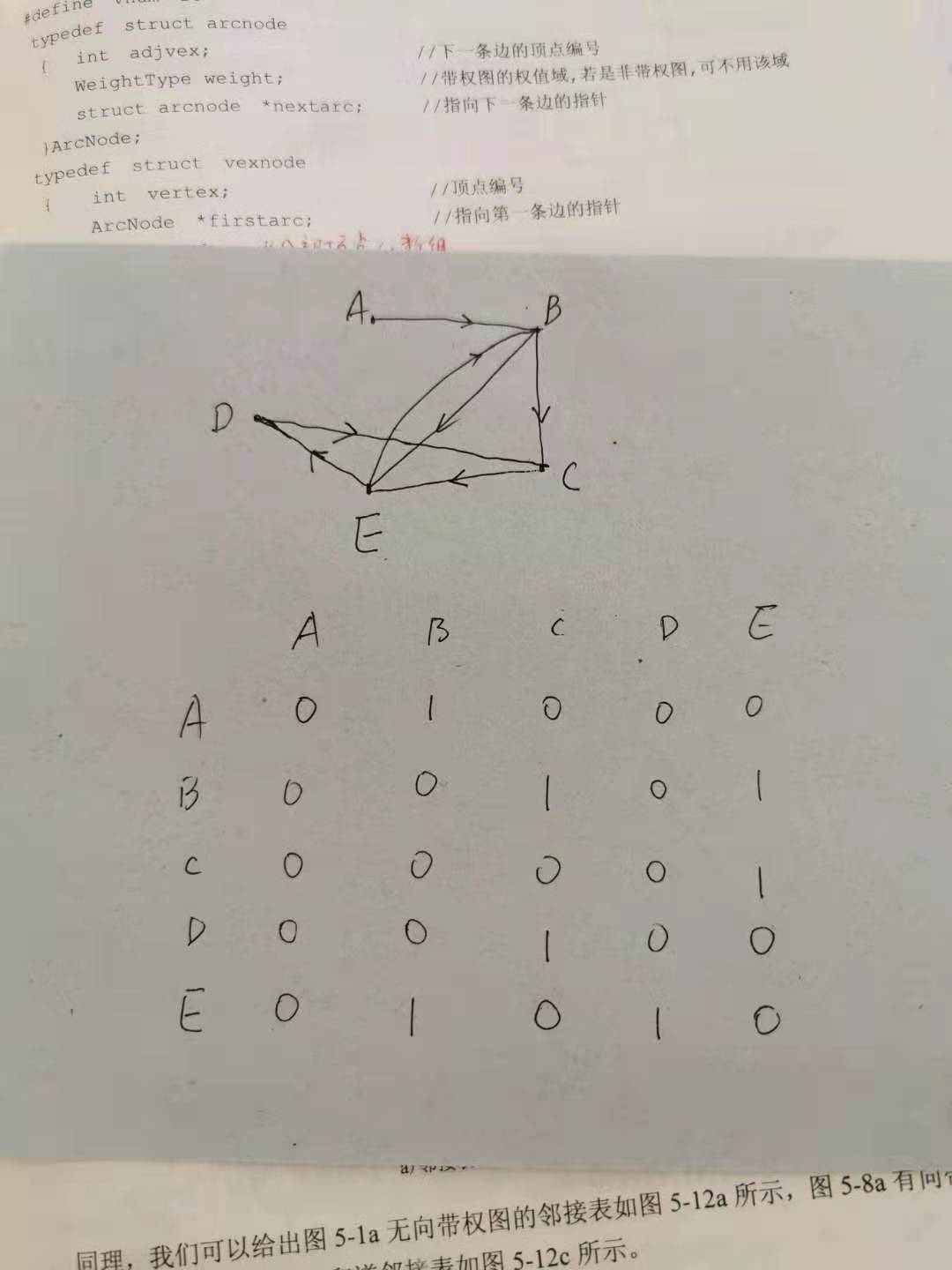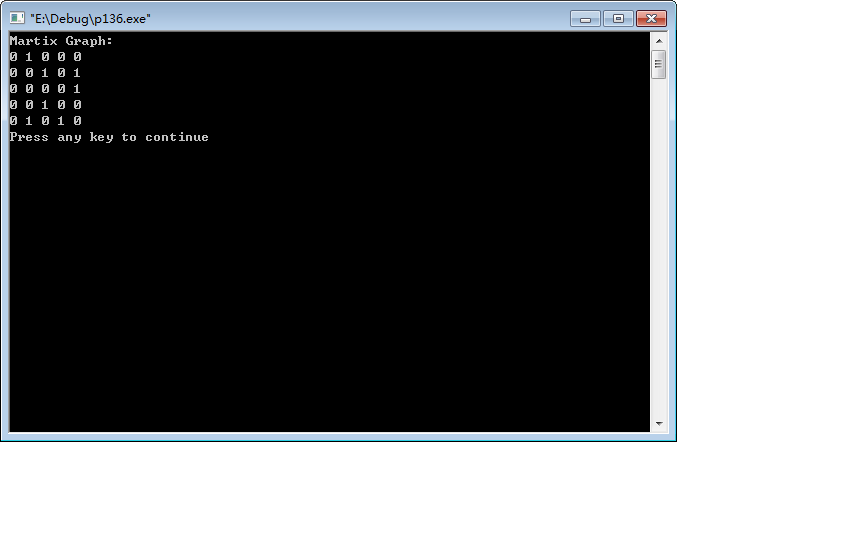
源程序:
#include <stdio.h>
#include <stdlib.h>
#include <malloc.h>
#include <string.h>
#define MAX 100
#define isLetter(a) ((((a)>='a')&&((a)<='z')) || (((a)>='A')&&((a)<='Z')))
#define LENGTH(a) (sizeof(a)/sizeof(a[0]))
// 邻接矩阵
typedef struct _graph
{
char vexs[MAX]; // 顶点集合
int vexnum; // 顶点数
int edgnum; // 边数
int matrix[MAX][MAX]; // 邻接矩阵
}Graph, *PGraph;
/*
* 返回ch在matrix矩阵中的位置
*/
static int get_position(Graph g, char ch)
{
int i;
for (i = 0; i<g.vexnum; i++)
if (g.vexs[i] == ch)
return i;
return -1;
}
/*
* 读取一个输入字符
*/
static char read_char()
{
char ch;
do
{
ch = getchar();
}while (!isLetter(ch));
return ch;
}
/*
* 创建图(自己输入)
*/
Graph* create_graph()
{
char c1, c2;
int v, e;
int i, p1, p2;
Graph* pG;
// 输入"顶点数"和"边数"
printf("input vertex number: ");
scanf("%d", &v);
printf("input edge number: ");
scanf("%d", &e);
if (v < 1 || e < 1 || (e >(v * (v - 1))))
{
printf("input error: invalid parameters!
");
return NULL;
}
if ((pG = (Graph*)malloc(sizeof(Graph))) == NULL)
return NULL;
memset(pG, 0, sizeof(Graph));
// 初始化"顶点数"和"边数"
pG->vexnum = v;
pG->edgnum = e;
// 初始化"顶点"
for (i = 0; i < pG->vexnum; i++)
{
printf("vertex(%d): ", i);
pG->vexs[i] = read_char();
}
// 初始化"边"
for (i = 0; i < pG->edgnum; i++)
{
// 读取边的起始顶点和结束顶点
printf("edge(%d):", i);
c1 = read_char();
c2 = read_char();
p1 = get_position(*pG, c1);
p2 = get_position(*pG, c2);
if (p1 == -1 || p2 == -1)
{
printf("input error: invalid edge!
");
free(pG);
return NULL;
}
pG->matrix[p1][p2] = 1;
}
return pG;
}
/*
* 创建图(用已提供的矩阵)
*/
Graph* create_example_graph()
{
char vexs[] = { 'A', 'B', 'C', 'D', 'E'};
char edges[][2] = {
{ 'A', 'B' },
{ 'B', 'C' },
{ 'B', 'E' },
{ 'C', 'E' },
{ 'D', 'C' },
{ 'E', 'B' },
{ 'E', 'D' } };
int vlen = LENGTH(vexs);
int elen = LENGTH(edges);
int i, p1, p2;
Graph* pG;
// 输入"顶点数"和"边数"
if ((pG = (Graph*)malloc(sizeof(Graph))) == NULL)
return NULL;
memset(pG, 0, sizeof(Graph));
// 初始化"顶点数"和"边数"
pG->vexnum = vlen;
pG->edgnum = elen;
// 初始化"顶点"
for (i = 0; i < pG->vexnum; i++)
{
pG->vexs[i] = vexs[i];
}
// 初始化"边"
for (i = 0; i < pG->edgnum; i++)
{
// 读取边的起始顶点和结束顶点
p1 = get_position(*pG, edges[i][0]);
p2 = get_position(*pG, edges[i][1]);
pG->matrix[p1][p2] = 1;
}
return pG;
}
/*
* 打印矩阵队列图
*/
void print_graph(Graph G)
{
int i, j;
printf("Martix Graph:
");
for (i = 0; i < G.vexnum; i++)
{
for (j = 0; j < G.vexnum; j++)
printf("%d ", G.matrix[i][j]);
printf("
");
}
}
void main()
{
Graph* pG;
// 自定义"图"(输入矩阵队列)
//pG = create_graph();
// 采用已有的"图"
pG = create_example_graph();
print_graph(*pG); // 打印图
}
运行结果:
